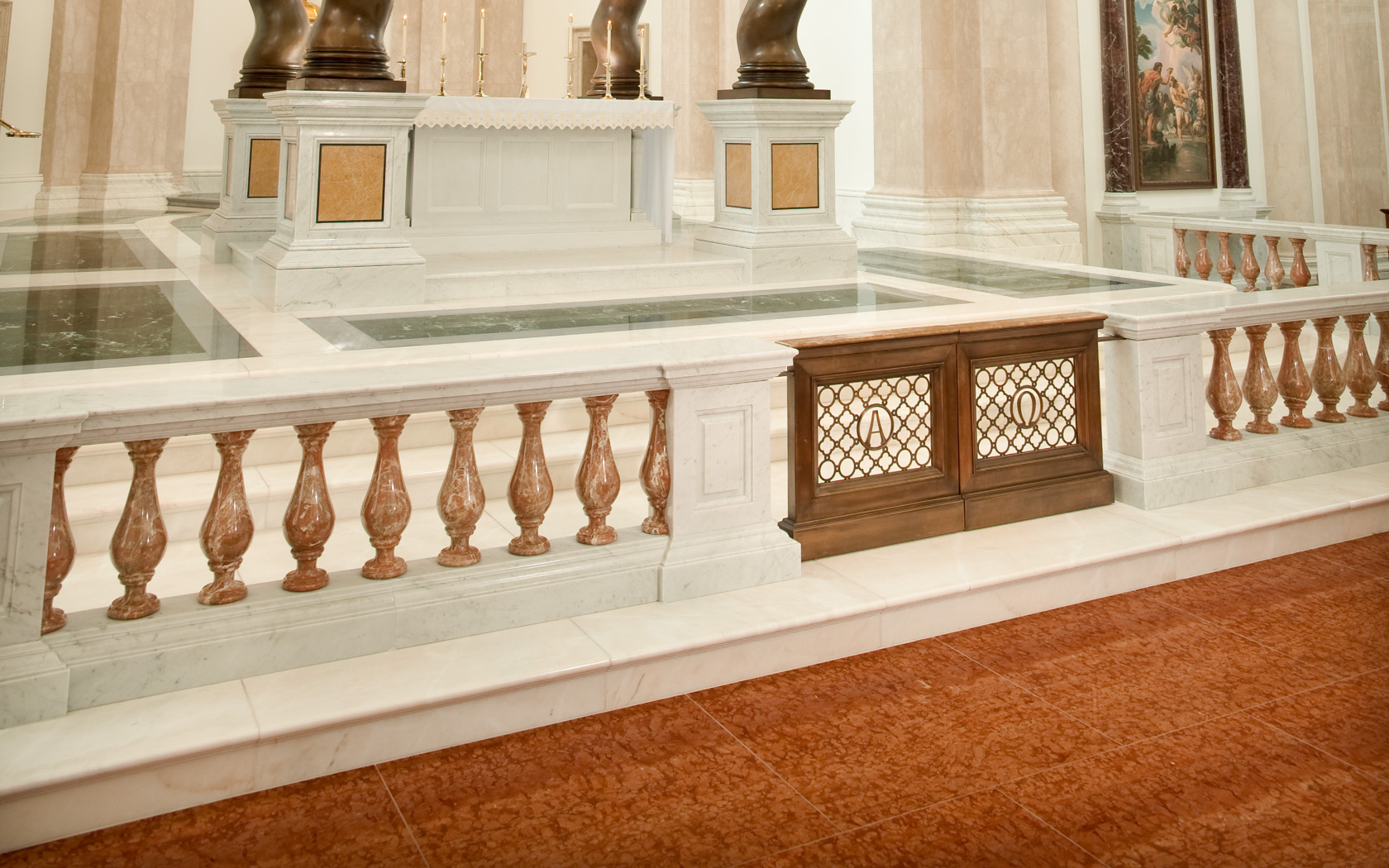This is the fourth in a series of blog posts on Traditional Catholic Worship
One of the marks of traditional Catholic worship is kneeling to receive communion on the tongue. This started to become the norm in our parish in Greenville pretty much on its own. We found that as we emphasized reverence in worship an increasing number of people were kneeling to receive communion on the tongue. This made the usual style of receiving communion (standing in line to receive the host on the hand) increasingly cumbersome as folks would get to the head of the line, get themselves down to kneel and then sometimes struggle to get back up again.
Eventually parishioners requested that we install an altar rail. Happily, the new church building was suitable for an altar rail so we had one designed. The parishioners themselves offered to pay for its construction and installation with designated gifts. After the rail was installed we made sure there was adequate catechesis regarding the proper reception of communion.
I made it clear that we were not imposing anything on anyone, but that the altar rail offered to those who wished to kneel to receive communion on the tongue a less obtrusive and more convenient way to do so. If others still wished to stand and receive communion on the hand or kneel and receive on the hand they were free to do so. In this way we were able to listen to the concerns of all our people and not impose any particular style on them. At the same time we encouraged folks, most of all, in whatever way they chose to receive communion to do so with reverence and care.
Since then almost everyone chooses to kneel to receive communion and the majority of folks receive on the tongue. Why is this important? I, for one, do not think it is SO important as to impose it on others, however to receive kneeling is clearly a sign of reverence and honor to Christ the Lord. Receiving on the tongue helps to eliminate particles of the host being dropped or sticking to a dirty hand and lost in movement. Also, receiving on the tongue eliminates the problem of visitors not knowing what they are doing and walking away with the host or even putting it in their pocket out of ignorance.
We have found the altar rail to be a great improvement in our corporate worship, and there are a couple of other advantages. First, that this was the request of the people and provided by the people. One of the principles of the Second Vatican Council is the empowerment of the laity and a reduction of clericalism. That our people asked for the altar rail and paid for it shows their participation in our worship and active involvement in our parish life together.
The other practical matter is that the administration of communion is faster at the altar rail while, at the same time the faithful have a few moments (before the priest or deacon comes to them) in which they are waiting on the Lord in silence. This is an added time for reverent reflection and intimacy with the Lord Jesus.
Letters on Liturgy is written as a series of letters to a seminarian on practical points to consider for traditional liturgy.







Leave A Comment
You must be logged in to post a comment.